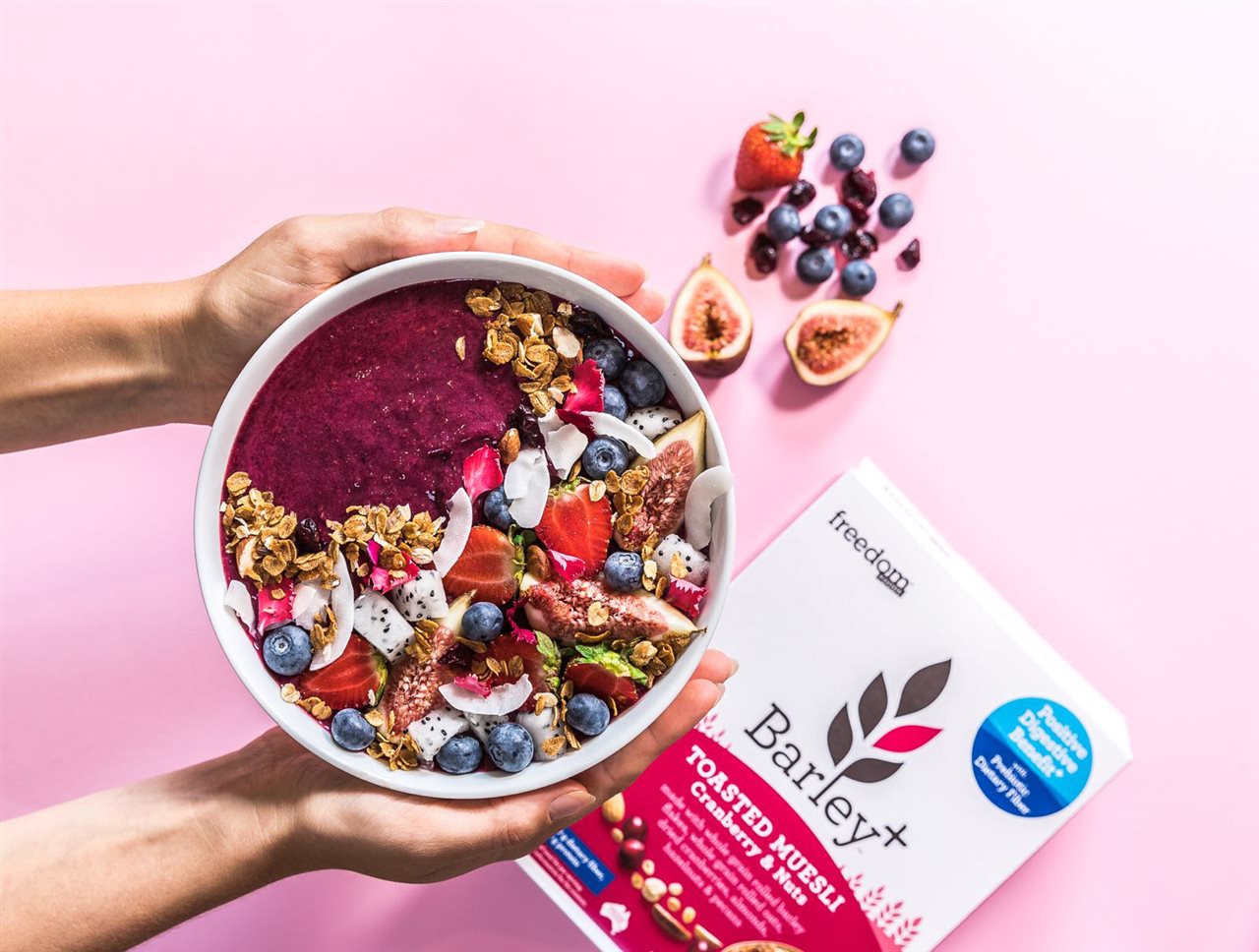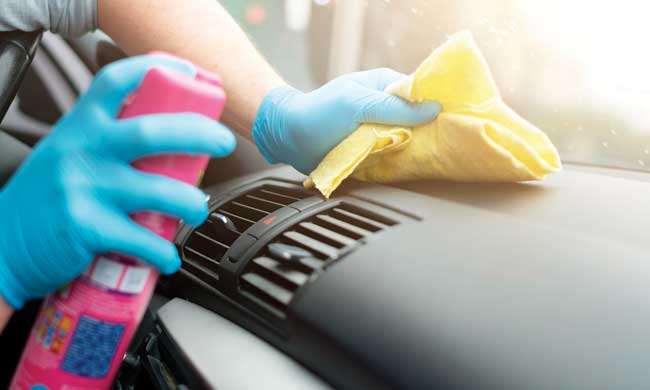Live Better
Gut check: Eat the right kinds of whole grains with the right kinds of fiber to cut cancer risk

(BPT) – Can cutting back on whole grains be bad for your gut and deadly to your health? Though some popular diets promote the elimination of grains, a recent report from the American Institute for Cancer Research suggests this may be ill-advised.
Researchers say 47 percent of colorectal cancers can be prevented with lifestyle changes, such as adding whole grains to your diet and exercising more. Eating three daily servings of whole grains reduces the risk of colorectal cancer by 17 percent, the report says.
But the link between whole grains and cancer may be confusing. After all, the major benefit of whole grains is fiber, and fiber is fiber, right?
Here’s the paradox about fiber: Americans have increased their consumption of fiber, including whole grains. In spite of that, bowel cancer is still one the most common types of cancer. Not all fiber is alike. Understanding how whole grains and their fiber types go to work in the gut may hold the key to reducing the risk of colorectal cancer.
A new kind of super-grain
First, we turn to the humble barley grain. It may be on the verge of a big moment. Australian researchers spent 30 years breeding a variety of barley that contains more of the properties believed to reduce colon cancer. The result is a so-called super-grain called BARLEYmax.
What’s special about BARLEYmax? This non-GMO grain has twice the fiber as most other whole grains, including wheat. It’s also chock-full of a unique type of fiber called resistant starch. Scientists believe resistant starch plays an important role in keeping the gut environment healthy. BARLEYmax has four times as much resistant starch as wheat and oats, and scientists believe it’s this resistant starch that may be the key link to fighting colorectal cancer.
What do resistant starches do?
Why did the Australian researchers want to develop a grain that was high in resistant starches? Dr. David Topping, who headed the research team, points to previous research showing the link between diet and colorectal cancer.
Africans have a lower fiber intake compared to Americans and Australians, yet their bowel cancer rates are much lower, he reports. On the surface, this appears to diminish the role of fiber. Here’s the kicker: The African diet is much higher in resistant starches and fermentable fibers than American and Australian diets.
According to Topping, that highlights the key determinant of better bowel health and fighting cancer is that we eat enough of the right fiber types, from whole grain sources, rather than to focus only on the amount of fiber we eat.
How do resistant starches work?
We’ve all heard about how important it is to make sure the gut is inhabited by the right kinds of bacteria. But it’s not as simple as taking a probiotic supplement or eating yogurt for breakfast. Gut bacteria need food to thrive, and that’s where resistant starches come in.
In the gut, resistant starches are a food source for healthy gut bacteria, and these bacteria keep the gut environment healthy. When diets are low in resistant starches, it creates a “hungry gut bacteria population.” But increasing the availability of fermentable fiber-rich whole grains that feed the gut microbiota can potentially make us healthier.
Good sources of good fiber
It’s exciting to hear that boosting your intake of resistant starches can have such a profound effect on your well-being and health. Getting the right foods that “feed” your gut has been tricky because, frankly, many are not appealing to American tastes.
Green bananas are a prime example. Although resistant starches are abundant in foods like cooked and cooled potatoes, barley and oats, these have to be eaten cold to get the full benefits, because these starches break down when heated.
Australian natural foods company Freedom Foods is the first breakfast manufacturer to bring the unique BARLEYmax grain to the U.S. under their Barley+ line of Toasted Mueslis and nutritional bars. The format, which is much closer to American-style granola but without all the sugar, will provide Americans with a much more accessible way to access resistant starch than some of the more obscure sources currently available.
Barley+ Toasted Muesli and Barley+ Snack Bars are now available at grocers and other retailers. To learn more about the mueslis and snacks, visit freedomfoodsus.com.
Live Better
Cost-efficient car detailing at home

(Family Features) Having your car professionally detailed is likely to set you back a chunk of change, but with the right supplies and a little spare time, you can get similar results at home.
Whether you’re washing away winter grime or just giving your ride some overdue attention, follow these steps to get your vehicle in tip-top shape.
Assess your vehicle’s condition. If there’s a specific problem you need to address, such as stains or excessive insect buildup on your front bumper, those are areas you’ll want to focus your time, energy and budget.
Purchase the necessary supplies. A car cleaning kit could simplify the shopping process, but you may need to supplement with additional items, such as a spot treater, to achieve the best results. The essentials include a sturdy bucket, washing mitt, soft bristle brush, soft rags, a dust rag, automotive soap, glass cleaner, a vinyl or interior-safe cleanser, vacuum and wax, if you wish.
Empty the vehicle. Removing all your personal possessions provides a blank slate for cleaning and prevents you from having to work around or worry about damaging your belongings. Also remove any elements of the vehicle you may want to clean separately, such as floor mats, console inserts and other removable pieces.
Tackle the interior. Start by removing debris from crevices and wiping away dust and other gunk. Then, with the initial layer of mess removed, go back and wipe down all surfaces using a cleanser. You can also clean the interior windows at this stage, and be sure to wipe down the console, especially if you have a touchscreen that is covered with fingerprints.
Vacuum thoroughly. Using a small vacuum or hose with strong suction, pay special attention to high-traffic areas and spaces where trash and debris tend to settle, such as between the seat and console. The floorboards will likely need the most attention, but don’t overlook the seats, and especially the area where the seat and back meet as this crevice can trap a great deal of dirt.
Clean the floor mats. Chances are good your floor mats rival the exterior for the dirt and grime they accumulate. Depending on how heavily soiled they are, and especially if they’re carpet-style mats, you may want to shampoo them after a deep vacuuming to remove stubborn stains.
Return belongings to the interior. Before you add everything back into your vehicle, take time to wipe down items and sort out any unnecessary clutter. It’s a good time to reorganize your storage areas to be sure the items you use frequently are in easy reach. You can also replenish supplies such as facial tissue and hand sanitizer.
Wash the exterior. Follow the instructions on the product’s label to wash your automobile’s exterior. Pay attention to special requirements such as allowing time for a bug remover to soak. In general, start with a rinse, followed by scrubbing with a mitt then an all-over rinse. Use a chamois towel or other drying cloth to avoid water spots.
Add finishing touches. If you’re using wax or planning on specialty treatments like tire cleaning, those will be among your final steps. Last but not least, clean the exterior windows with glass cleaner to remove streaks and leave them sparkling.
Find more practical vehicle maintenance tips at eLivingtoday.com.
Photo courtesy of Shutterstock
SOURCE:
eLivingtoday.com
Live Better
5 tips for new pet owners

(Family Features) Welcoming a new pet is exciting, but preparation is needed to provide a loving home and enjoy the unconditional love.
Prepare your furry friend for a new home with these essential tips for first-time pet owners.
Choose the Right Pet for Your Lifestyle
Consider your living situation, work schedule and personal preferences. Research different breeds to find the one that matches your activity level, living space and family dynamics. Also consider any allergies or sensitivities you or your family may have as some pets may trigger allergies or asthma symptoms.
Set Up Your Home
Before bringing your new pet home, create a safe and comfortable environment. Start by pet-proofing your home, removing any hazardous substances and securing loose wires or cords. Make sure to store cleaning supplies, medications and toxic plants out of reach. Provide a designated space that includes a cozy bed or crate, food and water bowls and toys.
Create a Routine
Establish a consistent schedule for feeding, exercise and bathroom breaks. Determine the appropriate amount and frequency of meals for your pet’s age, size and breed. Spend quality time with your pet daily, providing attention, affection and mental stimulation.
Budget for Your Pet’s Needs
Owning a pet comes with financial responsibilities. Consider the costs of food, grooming, veterinary care, vaccinations and preventive medications. Additionally, factor in the cost of toys, bedding, litter and other supplies.
Find a Reliable Veterinarian
Regular check-ups and open communication with a local veterinarian can help detect any potential health issues early and ensure your pet receives the best possible care. Ask friends, family or neighbors with pets for provider recommendations and read reviews. Visit potential veterinarians’ offices to meet the staffs, tour the facilities and ask any questions you may have.
Find more tips for welcoming a furry friend into your home at eLivingtoday.com .
Photo courtesy of Unsplash
Watch video to find out how!
SOURCE:
eLivingToday.com
Live Better
6 steps to spring into lawn, garden care

(Family Features) If cooler weather has you longing for sunny days outdoors, take heart. Once spring rolls around, you can prepare your yard for months of warm-weather enjoyment with these tips.
Watch video to find out how!

- Clear the Yard
Remove any leaves, rocks or sticks that may have accumulated then cut the grass as short as you can.

- Dethatch
Use a thatching rake to remove dead roots and grass.

- Treat Weeds
Apply herbicide to treat weed-infested areas. Allow the weed killer to work for about a week then rake to remove dead weeds.

- Add Seed and Fertilizer
Depending on your lawn’s needs, overseed or spot seed to fill in thin spots. Use a grass variety that matches your climate for best results. Select and apply fertilizer consistent with your grass type then water thoroughly.

- Clear Garden Beds of Debris
Remove leaves and other matter that piled up in your garden during the cooler months. Gently turn the soil and work in fresh fertilizer.

- Start Planting
Early spring is the time to divide perennials and plant hardier vegetables, such as onions and potatoes. You can also start indoor seeds, if necessary, and move plants outdoors when the weather permits.
Getting some of your lawn and garden care underway now can make those warmer, sunny days feel closer in no time. Find more seasonal tips for prepping your yard at eLivingtoday.com.
SOURCE:
eLivingToday
-

 NEWS2 years ago
NEWS2 years ago2 hurt, 1 jailed after shooting incident north of Nocona
-

 NEWS1 year ago
NEWS1 year agoSuspect indicted, jailed in Tia Hutson murder
-

 NEWS2 years ago
NEWS2 years agoSO investigating possible murder/suicide
-

 NEWS2 years ago
NEWS2 years agoWreck takes the life of BHS teen, 16
-

 NEWS2 years ago
NEWS2 years agoMurder unsolved – 1 year later Tia Hutson’s family angry, frustrated with no arrest
-

 NEWS2 years ago
NEWS2 years agoSheriff’s office called out to infant’s death
-

 NEWS2 years ago
NEWS2 years agoBowie Police face three-hour standoff after possible domestic fight
-

 NEWS2 years ago
NEWS2 years agoDriver stopped by a man running into the street, robbed at knifepoint







